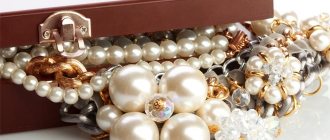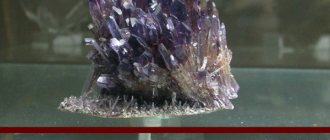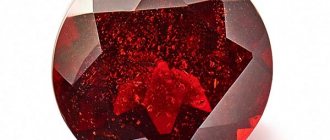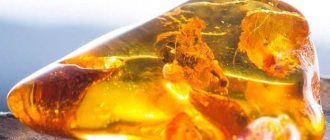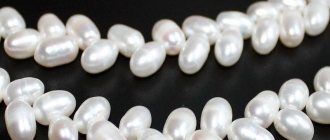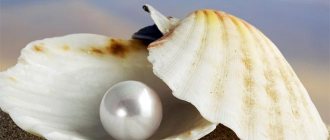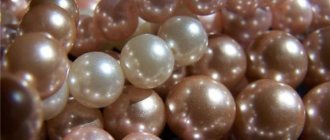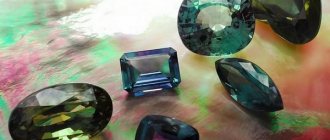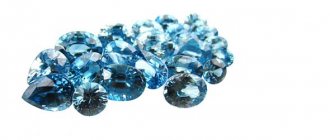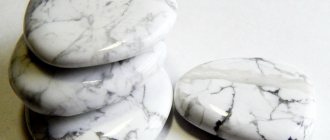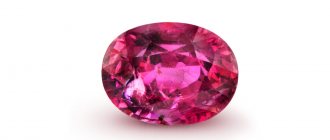| Stone type | Precious, semi-precious |
| Prevalence (Deposits) | Mexico, Panama, India, Tahiti, Sri Lanka, Japan, etc. |
| Varieties | Acoya, Baroque, Mabe, Mallorca, Oceanic, Freshwater, Tahiti, South Sea |
| Transparency | Translucent, opaque |
| Shine | Pearl |
| Mohs hardness scale | 3—4 |
| Chemical composition | CaCO3 |
| Color | White, blue, yellow, gold, pink, gray, black |
| Owner's color type | Spring, winter, autumn |
| Owner's temperament | Melancholic, Sanguine |
| Names | Andrey, Boris, Valentina, Galina, Eva, Evgeny, Evdokia, Inna, Irina, Claudia, Lilia, Margarita, Nadezhda, Oleg, Rosa, Sergey, Sofia, Elina, Yuliana |
| Zodiac sign | Libra, Cancer, Pisces |
| Date of Birth | from June 22 to July 22 from September 23 to October 23 from February 19 to March 20 |
| Chinese horoscope | Rabbit, horse, dog |
| Element | Water, Air |
| Planet | Neptune |
| Day of the week | Monday |
| Month | June, July, November, February |
| Season | Winter, summer, autumn |
| Numerology vibration | 2, 6, 7 |
| Chakra | Vishuddha, Sahasrara |
| What stones is it compatible with? | Aventurine, aquamarine, amethyst, turquoise, diamond, heliodor, heliotrope, garnet, emerald, moonstone, opal, rose quartz, ruby, chrysoprase, zircon, jasper |
| What stones is it not compatible with? | Beryl, malachite, sardonyx |
| Therapeutic effect (problems) | Blood pressure, vision, immunity, nervous disorders, memory and mental abilities |
| Therapeutic effect (on organs) | Organs of the gastrointestinal tract |
| Magic properties | Spiritual development, deception, strengthening relationships, black magic |
Pearls are the only precious mineral of animal origin in the world. Jewelry with it has been valued at all times. High and stable demand has led to the emergence of many imitations of this material. In order not to buy a fake, you need to know how to distinguish natural pearls from artificial ones.
Terminology: What are wild, cultured and cultured pearls?
There are several varieties of pearls. The well-known natural one is far from the only representative of this type of mineral. In addition to it, there are cultivated and artificial types.
Natural pearls can be divided into sea and river pearls. Natural “gift of the sea” is formed by the introduction of a grain of sand into the mantle of a bivalve mollusk. Over time, it becomes covered with a layer of mother-of-pearl. This process takes several years - this is what makes pearls such a valuable material.
Be sure to watch: What is the difference between a ruby and a garnet, how not to confuse the stones and distinguish a fake
The freshwater species is formed in exactly the same way, however, unlike the marine species, it has a less expressive shine and is not always an ideal shape. For this reason, its cost is much lower.
A cultivated mineral is created by man. The principle of its formation is the same. The only difference is the core of the pearl. It's artificial. The longer the pearl “matures,” the thicker the layer of nacre formed. With artificial cultivation, you can control not only the size, but also the shade of the mineral. Visually, cultured pearls are very difficult to distinguish from natural ones. The leader in this area is Japan, second place belongs to China.
Artificial pearls are also available in several types. The most famous is called “Mallorca” (after the place of production). This is an organic type of pearl that imitates the natural process of pearl formation. Today it is the best imitation of natural pearl mineral on the jewelry market.
Roman pearls, the ancestor of the artificial variety, are glass beads filled with paraffin and coated with pearl essence.
Shell pearl is an American invention consisting of a core and many layers of pearlescent varnish.
It would be a stretch to call plastic beads artificial pearls. However, it is under this name that they can be found on the shelves of jewelry stores.
Care
Like any natural stone, artificial pearls also need timely care. To make your jewelry look decent, you should consider a few recommendations.
- The decoration can only be wiped with a napkin or cloth.
- Do not put it in water or try to clean it by placing it in a solution with a chemical.
- It is recommended to remove heavy dirt only with a damp cloth.
- You should not try to clean jewelry with artificial pearls using steam or ultrasound.
- Such products must be stored in special bags or in boxes lined with velvet.
- Contact of synthetic pearls with a solution of alcohol, vinegar, bleach, perfume, deodorants and creams is unacceptable.
- It is not advisable to wear jewelry without doing your hair. Artificial stone does not withstand contact with hair styling products.
In the next video you can watch the process of creating artificial pearls.
Basic verification methods
You can determine the authenticity of pearls at home using the following methods:
- visual;
- mechanical;
- chemical-physical;
- formal.
By combining these methods, confidence in the results can be significantly increased.
Visual inspection methods
Visual assessment includes examination of characteristics such as:
- color;
- form;
- structure;
- shine;
- weight.
How to distinguish natural pearls from artificial ones?
?The maturation of natural pearls is a long process that lasts... Published by stj.com.ua Tuesday, January 15, 2021
The shade of the pearl is the first thing people notice. The color range of natural pearls is very diverse and includes milky white, pink, silver, yellowish, light green and black tones. The brightness and purity of color affects the cost of the material.
Be sure to watch: How a pearl forms and grows in a shell
In addition, the play of light on the surface of the mineral is also important. Thanks to the phenomenon of interference, real pearls create the illusion of an internal glow. Artificial material is not capable of this (the exception is the “Mallorca” species).
Interesting! As for the shape, natural minerals in the form of a perfect ball are extremely rare. Most often they have pear-shaped, ovoid or elliptical contours. Natural spherical pearls can be found at auctions because of their incredible value. Even a cultivated species of the correct shape is not cheap.
Using a 10x magnifying glass, you can carefully examine the hole in the bead. If upon inspection a darker core is observed, the seller offers an artificial option. In the case of a cheap fake, you can see small scratches or smudges of pearlescent paint.
The surface structure of the pearl is heterogeneous. A bead that is smooth to the touch is most likely a synthetic product.
It is convenient to check pearl necklaces and bracelets by weight. The natural mineral is heavy. Low weight indicates that it is made of plastic or glass.
Mechanical methods
Based on the characteristics of the pearl, you can verify its authenticity using the following methods:
- "On the tooth." The natural mineral has a low density, so when you try to bite, you can feel a creak and a thin layer of mother-of-pearl on the tongue. This will not happen with an artificial species.
- Friction. By rubbing natural pearls against each other, you can observe a small amount of fine nacre powder.
- Impact on the surface. When it comes into contact with a hard surface as a result of a fall, a natural pearl will “acquire” small abrasions, scratches or dents that can easily be smoothed out with a finger. Artificial beads will not only remain perfectly intact, but will also easily bounce off the surface due to their lighter specific gravity.
The first two methods will not work on the Mallorca variety of organic pearls due to the true mother-of-pearl coating and special production technology.
Would you wear jewelry with artificial pearls?
Not really
Chemical-physical
Like any mineral, natural pearls have a number of chemical properties. Due to their low thermal conductivity, natural beads heat up very slowly. A bracelet made of real pearls will remain cool for a long time, while an artificial analogue will very quickly heat up to the owner’s body temperature.
Ultraviolet light can also reveal fakes. Natural pearls will glow under the lamp with a bluish tint, fake pearls will glow green or will not glow at all.
Important! One of the radical, but at the same time, simplest ways to check is to place a pearl bead in the fire for 1-2 minutes. The natural mineral will not be damaged during this time, the plastic will melt and the glass will crack.
If the owner is willing to sacrifice one pearl for the sake of authentication, then you can place the bead in a container with vinegar for a few minutes. Real pearls will dissolve, an artificial glass core will remain from the organic “Mallorca”, and nothing will happen to the colored plastic.
Formal
When purchasing, you should pay attention to the cost of the product. A genuine pearl necklace is very expensive. In addition, such jewelry must be issued with a quality passport or certificate of authenticity. You can purchase such products only in exclusive salons and brand stores.
?
How to distinguish natural pearls from artificial ones? ?✔ Run your fingernail over the pearl. If marks remain on it,... Published by Jewelry Friday, February 2, 2021
The river type is more common and costs much less. Organic Mallorca pearls are also sold in the same price segment. Products made of painted plastic or glass can be purchased in almost any jewelry department.
How to distinguish a natural mineral from its imitation
You can distinguish fake beads or a bracelet made from fake Burmitz grain using the following signs:
- Non-natural pearls look absolutely perfect; they are distinguished by their impeccable evenness and smoothness, and their round shape. Natural mother of pearl, which develops without human intervention, may have some errors.
- Imitation pearls are always lighter than natural minerals.
- All beads in a jewelry made from fake pearls have the same size and shape; in a necklace made from a natural mineral, the beads can have different parameters, although this is not always noticeable at first glance.
- The shine of unnatural Burmitz grain lacks the depth of the shine of the real thing.
- Imitation pearls in beads have the same color and tone, while real pearls sparkle in different shades.
- If you look closely at the holes that are drilled in the pearls in order to pass the thread, you will notice that the artificial mineral is chipped, and the material from which they are made, for example, plastic, is visible through them.
- Non-natural pearls, such as acrylic ones, will not be as cool to the touch as real minerals. Natural Burmitz grain always with its coolness resembles the depth of the waters in which it was mined, and artificially created pearls quickly take on the temperature of the room where they are located.
Also, the imitation mineral is easily susceptible to external influences; if it is slightly scratched, no traces will remain on natural Burmitz grain. In addition, dust, high humidity, strong sunlight, and temperature changes contribute to the rapid aging of beads made from unnatural minerals. A real pearl necklace can retain its original appearance if properly stored for 150-200 years. There are cases where a family heirloom pearl has been passed down from generation to generation for 400 years.
Main conclusions
You can also check the authenticity of pearls at home. To do this, you need to know its basic physical and chemical characteristics.
- In addition to the natural sea and river species, there are several other varieties of pearls.
- You can check the naturalness of a material in several ways: from a simple visual inspection to mechanical and chemical influence.
- Some species are practically indistinguishable due to the original production technology.
When purchasing a pearl bracelet or necklace, you should make sure not only that all parameters comply, but also that you have documents confirming the authenticity of the natural mineral.
Vinegar vapor poisoning symptoms
Acetic acid poisoning poses a threat to human life. The victim must be assisted immediately to avoid dangerous consequences. Vinegar intoxication has clear clinical symptoms, which prevents it from being confused with poisoning of another nature.
Acetic acid is a clear, colorless liquid with a specific odor. It is used both for industrial purposes (for example, in the manufacture of medicines) and in everyday life as table vinegar.
How are pearls formed in a shell?
The formation of pearls is a long and complex process. First, a small grain of sand gets inside the shell. The oyster tries to reject the traumatic agent. In this case, many mollusks die. The duration of this stage is about a year.
Then the surviving individuals try to protect themselves from the traumatic effect of the grain of sand. In response to this, the oyster’s body produces a special substance that envelops the fragment, depriving it of sharp corners.
The process can last from a year to 6 years. The final size of the pearl depends on the duration of this stage. The average bead takes two to three years to form.
Characteristics of naturalness
To identify natural pearls, you need to know the features:
- Organic pearls come in a variety of colors. Minerals of pastel colors are more common. Natural specimens cannot be acidic or bright shades.
- Real gems are rarely perfectly round. Oval, baroque and other irregular shapes are more common.
- Pearls heat up extremely slowly. Even if the room is hot, the gems remain cool to the touch.
- The mineral is sensitive to oxidizing agents. If you place a natural pearl in vinegar, it will instantly dissolve.
Properties of pearls that are difficult to fake
The color, shape, and size of the mineral are easy to reproduce. The difficulty is imitation of the surface. Organic samples have a large number of defects. It is almost impossible to reproduce them. Moreover, each pearl will be different from the other.
Natural gems have a unique pearlescent sheen that their fake counterparts lack. In addition, natural pearls are heavier than plastic or glass beads.
View this publication on Instagram
Publication from JEWELRY EARRINGS BRACELETS (@elena_fly_aleshina) July 26, 2021 at 1:18 PDT
View this post on Instagram
Publication from ACCESSORIES AND BEADS Krasnodar? (@furnitura_bysiny) Jul 17, 2021 at 2:04 PDT
Important to consider
Imitation production technologies are actively developing, and identifying fake pearls is becoming more and more difficult.
The more methods you use when checking, the more signs of authenticity or imitation you will find.
None of the proposed methods, or even their combined use, provides a 100% guarantee of identifying a counterfeit. If you want to get an accurate result, contact a professional jeweler or gemologist. It is very important to take advice from experts in the world of pearls.
Natural pearls have many advantages. Only natural specimens are valued in lithotherapy or can serve as a profitable investment. Therefore, it is important to be able to distinguish natural pearls from artificial ones.
Technologies of skillful counterfeiting
Before you can determine authenticity, you need to know how to copy it. The first fakes and imitation pearls began to be made from glass.
However, such material did not convey the pearlescent shimmer inherent in real stone.
In the Middle Ages, the so-called Roman artificial pearls appeared. It was made by pouring paraffin into glass beads.
Mother-of-pearl essence was also produced, made from fish scales; when properly processed in glass fakes, it imitated the shimmer of natural pearls.
Already in the 20th century, they began to make products coated with a special varnish.
Today, with the development of polymer production, artificial imitations are sold on every corner in a jewelry store. It is not difficult to check the authenticity of pearls. Even the most skillful fake cannot imitate the creation of nature. And when they offer to purchase a necklace or individual stones, you can spot a fake.
So, how to determine whether pearls are real or artificial?
Stone cost
The price of a stone depends on the quality class, shape and size of the bead.
- An average cultured pearl is valued at $4-$100.
- The price of a natural mineral can reach up to 1500 USD. e.
The cost of jewelry is also affected by the frame. Gold products are 10–20 times more expensive than silver ones. A silver ring costs $50-$70. The price of earrings is 100–250 dollars.
Pearls are one of the most noble gems. The high price is due to the difficulty of extraction and special properties. Pearl jewelry is suitable for almost everyone, while the mineral emphasizes the beneficial features of the owner.
If you love pearls and know facts about them, share them in the comments. All the best. Repost on social networks.
